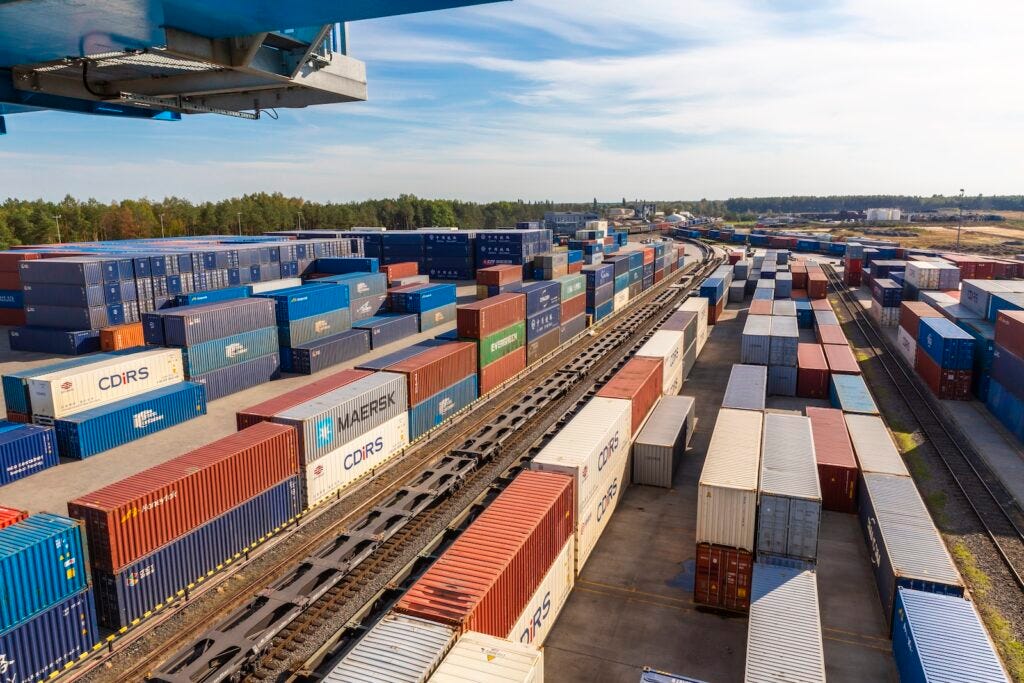Poland-Belarus border closure reshapes China-Europe rail freight

Poland's indefinite closure of its Belarus border on September 12, 2025, has halted critical China-Europe rail routes handling over 700,000 TEUs annually. With alternative corridors unable to absorb the volume, shippers face permanent supply chain reconfiguration.
The Terespol-Brest and Kuźnica-Bruzgi crossings previously handled approximately 20-25 trains daily, representing the primary route for China-Europe rail freight. In 2024, roughly 746,000 TEUs crossed from Belarus into Poland, accounting for the majority of the 1.5-2 million TEUs in total China-Europe rail trade.
Poland declared the closure "indefinite," citing security concerns. China's Foreign Minister Wang Yi failed to secure reopening during his Warsaw visit. The shutdown affects not only China-Europe trade but also significant China-Russia volumes transiting through Poland.
Christmas inventory shipments face immediate impact. Rail typically delivers in 12-15 days from China versus 35-45 days by sea. Forwarders report rate increases of 40-60% on alternative routes as capacity tightens.
Limited alternatives
The Middle Corridor through Kazakhstan, Azerbaijan, Georgia and Turkey handled only 50,500 TEU containers in 2024 – less than 7% of Belarus route volume. Despite carrying 4.1 million tons of total freight, infrastructure bottlenecks at Caspian crossings and Caucasus gauge changes severely limit container capacity.
Routes through Lithuania and Latvia remain possible but add cost and complexity. Ukraine's Chop-Záhony crossing to Hungary operates despite the war, with Ukrainian Railways running limited services. Security risks and infrastructure damage prevent significant expansion.
Kazakhstan's KTZ and Turkey's TCDD have announced expansion plans, with the Trans-Caspian consortium planning EUR 2 billion in investments through 2027. But scaling from 50,000 to 750,000+ TEUs requires massive infrastructure development.
Strategic recalculation
The closure forces immediate diversification that EU officials have encouraged since 2022. Major shippers are reassessing China-Europe rail dependence, with some accelerating nearshoring plans. The indefinite nature of Poland's decision signals that security concerns now permanently override commercial considerations.
The disruption affects Trans-European Transport Network (TEN-T) corridor planning, with the EU considering Connecting Europe Facility (CEF) funding reallocation toward Middle Corridor infrastructure. Reducing Belarus dependence has become a policy priority, not just commercial preference.
For China, the disruption undermines Belt and Road Initiative credibility. Beijing promoted rail as faster than sea and cheaper than air. Without the Belarus route, maintaining this value proposition becomes nearly impossible. The corridor represented China's primary land bridge to European markets.
Permanent realignment
Even if Poland eventually allows limited reopening, the episode has shattered reliability assumptions. Automotive and electronics companies are diversifying supply chains away from single-corridor dependence.
The economics of Eurasian rail freight face existential challenges. The model requires speed advantage over ocean shipping and cost advantage over air freight. Current alternative routes cannot maintain these differentials at scale.
Market structure will likely fragment. Some cargo will return permanently to maritime routes, while premium goods might justify higher-cost rail alternatives.
The era of high-volume, predictable China-Europe rail transit through Belarus has ended.

